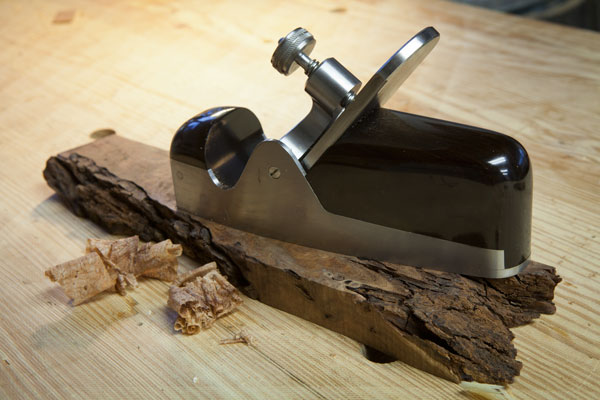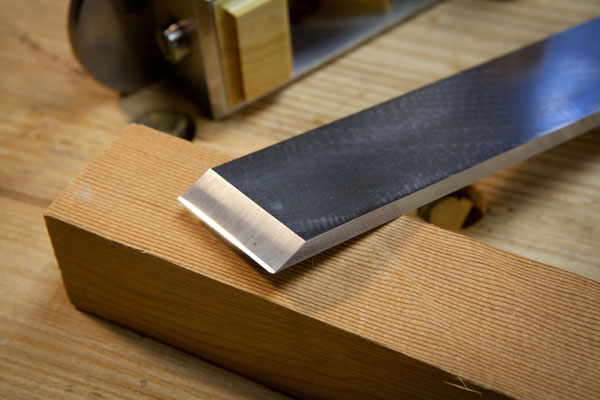We may receive a commission when you use our affiliate links. However, this does not impact our recommendations.
One of the best things about getting older has been the fact that I can now do more woodworking tasks “by feel” than “by eye.”
As my already-crappy eyesight has become dulled by middle age, I’ve found that my other senses – particularly my sense of touch – have become heightened. I cannot always see a knife line, but I can feel it with my saw, chisel or plane.
Same goes with the dreaded tear-out – I can feel it coming through the tote and knob of my handplane before I see it in a shaving or on the wood itself. This feedback allows me to correct things during my stroke – usually rotating the plane’s body slightly – to improve the feedback.
I also can feel when a board is flat or clean – I don’t have to inspect every square centimeter (unless I want to).
You don’t, however, have to endure 20 years of woodworking to develop this intuition. The shortcut is to simply get a chunk of Tasmanian blackwood (Acacia melanoxylon) and see if you can plane it without tearing it.
Toolmaker Colen Clenton gave me a hunk of it while I was in Australia this month, and it’s from the same board that David Charlesworth’s chunk of blackwood comes from. It is nasty stuff, and this particular chunk has bark inclusions, plus sapwood, heartwood and crazy grain. Fun!
This week I decided to see how my planes measure up and record what settings on the tool will produce a clean surface. The results were not surprising. To get clean cuts, you need some combination of the following properties.
1. Sharp iron. Sharp fixes everything.
2. Fine cut. The thinner the shaving, the less tearing.
3. High pitch. Planes that are pitched at 55° or higher have an easier time with blackwood.
4. A close-set chipbreaker. If the plane has a chipbreaker, set it a hair’s width from the edge. A chipbreaker isn’t a must-have item. I have several planes without breakers that could handle the blackwood easily using the above three characteristics. But if you have a breaker, you might as well use it.
5. Tight mouth. Closing the mouth tight seems to help, though not as much as the top three characteristics.
6. Stop skewing. Skewing the tool lowers your effective cutting angle, which can increase tearing. Plane the grain directly 90° to the grain.
Oh, and all of the above tips are for naught if your plane does not have a well-bedded iron and a reasonably flat sole.
The Doomsday Board
Oh, this might be a good place to mention that I do own one board that is completely unplaneable. It’s a piece of perfectly straight-grained Douglas fir. John Economaki of Bridge City Tool Works sent it to me a couple years ago and suggested I give it a go.
So I took a single stroke on its face, and my plane iron was trashed – it looked like a toothed iron for veneer work.
I took a close look at the board. It looked normal in every way. I resharpened my iron and tried a different face. Again, my iron looked jagged, like a bread knife, after only one stroke.
What’s the deal?
Economaki explained that the board was from a tree that was near Mount St. Helens during its 1980 eruption. The wood was completely impregnated with tiny bits of volcanic crap. And those little bits of volcanic junk were trashing my plane.
The funny thing is that I didn’t just throw the board out. I keep it in the lumber rack in case I ever get into a planing contest that is unwinnable.
— Christopher Schwarz
Hey, want to set up a handplane so it can plane blackwood? A good place to start is with my new DVD “Super-tune a Handplane.” It goes through all the steps required to selecting an old tool and tuning it up using household products (nor surface grinders or milling machines). Check it out here.
Here are some supplies and tools we find essential in our everyday work around the shop. We may receive a commission from sales referred by our links; however, we have carefully selected these products for their usefulness and quality.











Now that looks like a piece of Dalbergia Melanoxylon sitting on top of piece of Acacia Melanoxylon. A grade Dalbergia I may add, from what I can see. I often use what I suppose is of a lesser quality timber for my chisel or file handles, only because the grain is more visible and appealing! Do have a few though that are midnight black. Turns like a dream.
Cheers
Frank
Cape Town
So if the Devil ever bets a smoother of gold against your soul that he’s a better at it than you, you have your trump card.
I have been using a lot of reclaimed fir in projects lately. I have also found that my edge tools look like ive been planing and chiseling rocks after only a few minutes of use. I have taken my jointer plane that wouldnt cut a shaving in the quarter sawn fir and planed some quarter sawn white oak and sliced it like butter. Then I go to chisel the waste out of dovetails in the fir and have the fibers crush and tear out like the wood is rotten, it can be very aggrivateing to say the least. I wont totally rule out operator error though. If that old fir didn’t look so darn good when it is cleaned up and put to use.
Considering the Mt. St Helens blast was 1600 times greater than Hiroshima, you could safely call it nuclear, and just after the douglas fir tree was embedded with debris it was also snapped off at the ground.
Nice plane Chis, but don’t get suckered into the mindset that only this sort of megabucks hand tool will do the job. I’ve proved to myself countless times with Holtey’s, Saur & Stieiner’s etc that well set up LN, Clifton or Veritas will produced the same result…in fact yesterday I was planing some African Blackwood which is equally hard and equally nasty with a new Veritas Small Bevel Up plane fitted with a PM V11 blade…nice thin shavings, no tear out.
Sure, these esoteric planes are nice to have and to use but they don’t in themselves guarantee a good result. You may also need to use them one handed because they’ll cost you an arm (and a leg) to buy one!
Is the volcanic debris embedded throughout the Douglas Fir, or is it only present near the bark of the tree?
Are those Daed Toolworks planes in your pictures? The smoother has different lines than Konrad’s or Wayne’s planes.
Nice of him to give you a board he knew woud trash your irons. Did you piss him off with a tool review?
“The funny thing is that I didn’t just throw the board out. I keep it in the lumber rack in case I ever get into a planing contest that is unwinnable.”
Ooh that’s cold, hilarious!